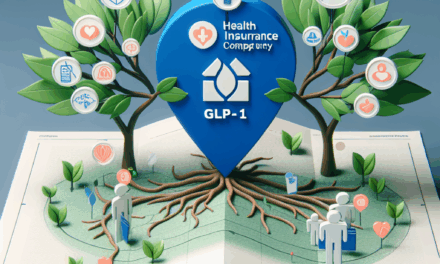Rite Aid Seeks Bankruptcy Protection Again Just Months After Chapter 11 Exit
In a surprising turn of events, Rite Aid, the well-known pharmacy chain, has once again sought bankruptcy protection, just months after emerging from Chapter 11 bankruptcy. This article delves into the circumstances surrounding Rite Aid’s financial struggles, the implications of its recent bankruptcy filing, and the broader context of the retail pharmacy industry. We will explore the factors leading to this situation, the company’s operational challenges, the impact on stakeholders, and potential paths forward for Rite Aid.
The Context of Rite Aid’s Financial Struggles
Rite Aid’s journey through financial turmoil is not a new narrative. The company has faced a series of challenges over the past decade, including increased competition, changing consumer behaviors, and significant debt burdens. Understanding the context of Rite Aid’s financial struggles requires a look at its history, market position, and the broader economic environment.
Historical Overview of Rite Aid
Founded in 1962, Rite Aid began as a small drugstore chain in Pennsylvania. Over the years, it expanded rapidly, acquiring several competitors, including Thrift Drug and Eckerd. However, this aggressive expansion came at a cost, leading to substantial debt accumulation. By the early 2000s, Rite Aid was struggling to maintain profitability, and in 2009, it was forced to close hundreds of stores and restructure its operations.
In 2018, Rite Aid attempted to merge with Albertsons, a grocery chain, but the deal fell through. This setback further exacerbated its financial woes, leading to a Chapter 11 bankruptcy filing in 2020. The company emerged from bankruptcy in 2021 with a restructured debt load and a renewed focus on its core pharmacy business.
Market Position and Competition
Rite Aid operates in a highly competitive market, facing challenges from both traditional pharmacy chains like CVS and Walgreens and emerging players such as Amazon and online pharmacies. The rise of e-commerce has transformed consumer shopping habits, with many opting for the convenience of online ordering and home delivery. This shift has put additional pressure on brick-and-mortar pharmacies to adapt or risk losing market share.
Moreover, the COVID-19 pandemic accelerated changes in consumer behavior, with many customers seeking contactless shopping options. Rite Aid’s ability to pivot and meet these new demands has been critical to its survival, yet the company has struggled to keep pace with its competitors.
Economic Factors Influencing Rite Aid’s Performance
The broader economic environment has also played a significant role in Rite Aid’s financial struggles. Rising inflation, supply chain disruptions, and labor shortages have all contributed to increased operational costs. Additionally, the healthcare landscape is evolving, with changes in insurance reimbursement rates and regulatory pressures impacting pharmacy profitability.
As consumers face rising costs in various aspects of their lives, discretionary spending on non-essential items, including health and wellness products, has declined. This trend has further strained Rite Aid’s revenue streams, making it difficult for the company to achieve sustainable growth.
Details of the Recent Bankruptcy Filing
In late 2023, Rite Aid announced its decision to file for bankruptcy protection once again, citing ongoing financial difficulties and the need for a comprehensive restructuring plan. This filing has raised eyebrows, especially given the company’s recent exit from Chapter 11 just months prior.
Reasons for the Bankruptcy Filing
The primary reasons for Rite Aid’s recent bankruptcy filing include:
- Continued Financial Losses: Despite efforts to streamline operations and reduce costs, Rite Aid has continued to report significant financial losses. The company’s inability to achieve profitability has made it challenging to service its debt obligations.
- High Debt Levels: Rite Aid’s debt burden remains substantial, limiting its financial flexibility. The company has struggled to generate sufficient cash flow to meet its debt payments, leading to the decision to seek bankruptcy protection.
- Operational Challenges: Rite Aid has faced ongoing operational challenges, including supply chain disruptions and labor shortages. These issues have hindered the company’s ability to deliver products and services efficiently.
- Competitive Pressures: The competitive landscape has intensified, with rivals continuing to innovate and capture market share. Rite Aid’s struggles to adapt to changing consumer preferences have further exacerbated its financial difficulties.
Impact on Stakeholders
The recent bankruptcy filing has significant implications for various stakeholders, including employees, customers, suppliers, and investors. Understanding these impacts is crucial for assessing the broader consequences of Rite Aid’s financial struggles.
For employees, the uncertainty surrounding the company’s future raises concerns about job security. Previous bankruptcy filings have often resulted in layoffs and store closures, and employees may face similar challenges in the current situation. Rite Aid has stated its commitment to minimizing disruptions, but the reality remains uncertain.
Customers may also feel the effects of Rite Aid’s financial struggles. Store closures or reduced services could limit access to essential medications and health products. Additionally, if Rite Aid is unable to maintain its inventory levels, customers may experience shortages of popular items.
Suppliers may face challenges as well, as Rite Aid’s financial instability could impact its ability to pay for goods and services. Suppliers may need to reassess their relationships with the company and consider the risks associated with doing business with a financially troubled entity.
For investors, the recent bankruptcy filing raises questions about the viability of Rite Aid as a long-term investment. The company’s stock has already experienced significant volatility, and the uncertainty surrounding its future may deter potential investors.
Operational Challenges Facing Rite Aid
Rite Aid’s operational challenges are multifaceted and have contributed significantly to its financial struggles. Addressing these challenges is essential for the company’s recovery and long-term sustainability.
Supply Chain Disruptions
The COVID-19 pandemic exposed vulnerabilities in global supply chains, and Rite Aid has not been immune to these disruptions. The company has faced challenges in sourcing products, leading to inventory shortages and delays in fulfilling customer orders. These supply chain issues have been exacerbated by rising transportation costs and labor shortages, making it difficult for Rite Aid to maintain consistent product availability.
To address these challenges, Rite Aid must invest in supply chain resilience. This could involve diversifying suppliers, optimizing inventory management, and leveraging technology to improve forecasting and demand planning. By enhancing its supply chain capabilities, Rite Aid can better respond to fluctuations in demand and mitigate the impact of future disruptions.
Labor Shortages and Workforce Management
Labor shortages have become a pressing issue across various industries, including retail and healthcare. Rite Aid has struggled to attract and retain qualified employees, leading to staffing shortages in its stores and pharmacies. This has resulted in longer wait times for customers and increased pressure on existing staff.
To address labor shortages, Rite Aid must focus on improving employee engagement and retention. This could involve offering competitive wages, enhancing benefits packages, and providing opportunities for career advancement. Additionally, investing in training and development programs can help employees build the skills needed to excel in their roles, ultimately improving customer service and operational efficiency.
Technological Adaptation
The retail pharmacy industry is undergoing a technological transformation, with advancements in e-commerce, telehealth, and digital health solutions reshaping the landscape. Rite Aid has made efforts to embrace technology, but it has struggled to keep pace with competitors who have successfully integrated digital solutions into their operations.
To remain competitive, Rite Aid must prioritize technological adaptation. This could involve enhancing its online presence, offering telehealth services, and leveraging data analytics to better understand customer preferences. By investing in technology, Rite Aid can improve the customer experience and streamline its operations.
Potential Paths Forward for Rite Aid
As Rite Aid navigates its latest bankruptcy filing, several potential paths forward could help the company regain stability and achieve long-term success. These strategies will require careful planning and execution to ensure a sustainable recovery.
Restructuring and Debt Management
One of the primary objectives of Rite Aid’s bankruptcy filing is to restructure its debt and improve its financial position. This process may involve negotiating with creditors to reduce debt levels, extend repayment terms, or convert debt into equity. A successful restructuring plan can provide Rite Aid with the financial flexibility needed to invest in its operations and pursue growth opportunities.
Additionally, Rite Aid may consider divesting non-core assets or underperforming stores to generate cash and focus on its most profitable locations. By streamlining its operations, Rite Aid can improve efficiency and enhance its overall financial health.
Enhancing Customer Experience
To regain customer loyalty and drive sales, Rite Aid must prioritize enhancing the customer experience. This could involve improving store layouts, expanding product offerings, and investing in staff training to ensure exceptional service. Additionally, Rite Aid should leverage customer feedback to identify areas for improvement and tailor its offerings to meet evolving consumer preferences.
Implementing loyalty programs and personalized marketing strategies can also help Rite Aid engage customers and encourage repeat business. By creating a more customer-centric approach, Rite Aid can differentiate itself from competitors and build lasting relationships with its clientele.
Exploring Strategic Partnerships
Strategic partnerships can provide Rite Aid with access to new markets, technologies, and resources. Collaborating with healthcare providers, technology companies, or other retailers can help Rite Aid enhance its service offerings and improve operational efficiency. For example, partnerships with telehealth providers could enable Rite Aid to offer virtual consultations and expand its healthcare services.
Additionally, exploring partnerships with delivery services can enhance Rite Aid’s e-commerce capabilities, allowing customers to access products conveniently from home. By leveraging strategic partnerships, Rite Aid can position itself for growth in an increasingly competitive landscape.
Conclusion
Rite Aid’s recent bankruptcy filing marks a significant chapter in the company’s ongoing struggle for financial stability. The challenges it faces are emblematic of broader trends in the retail pharmacy industry, including increased competition, changing consumer behaviors, and economic pressures. As Rite Aid seeks to navigate this turbulent landscape, it must focus on restructuring its debt, enhancing operational efficiency, and prioritizing customer experience.
The path forward for Rite Aid will require a combination of strategic planning, investment in technology, and a commitment to meeting the evolving needs of consumers. While the road ahead may be fraught with challenges, there is potential for Rite Aid to emerge stronger and more resilient in the face of adversity. By learning from past mistakes and embracing innovation, Rite Aid can work towards a brighter future in the retail pharmacy sector.





